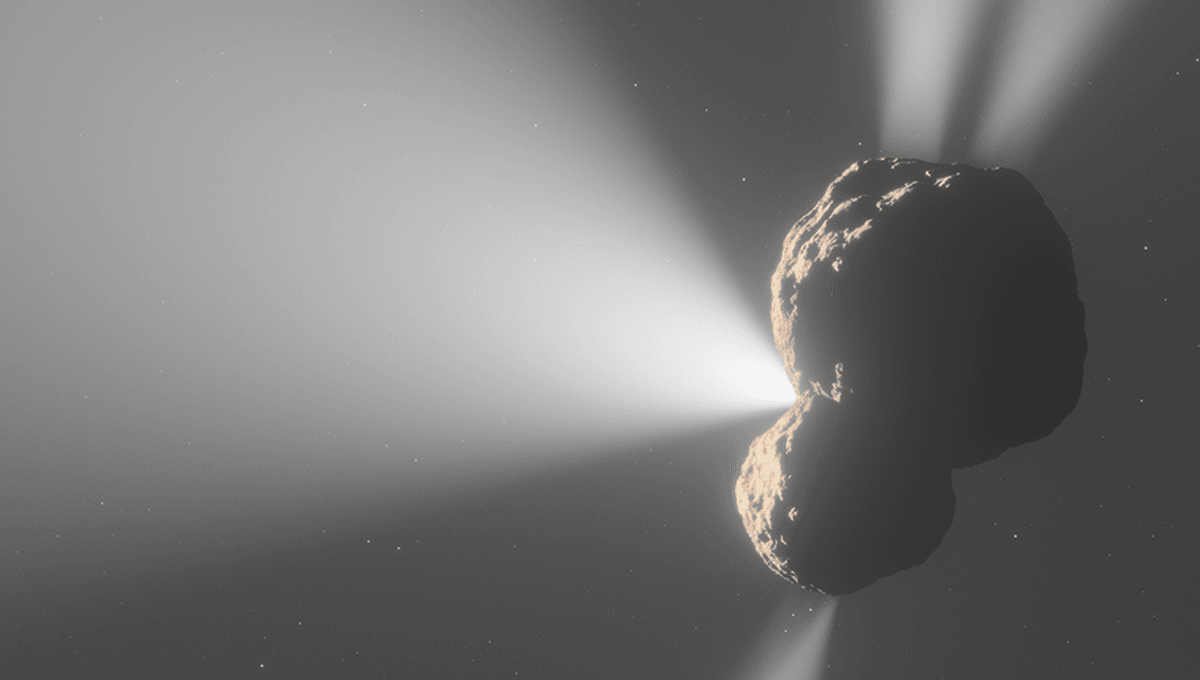
JWST has turned its considerable mirrors towards intriguing object 29P/Schwassmann–Wachmann 1, a highly active icy centaur that undergoes not-well-understood periodic outbursts.
Centaurs are pretty interesting space objects, which orbit the Sun between the orbits of Jupiter and Neptune. These objects are believed to be former trans-Neptunian objects that have made their way further towards the Sun through gravitational interactions with the planets. Because of this, they are of particular interest for studying the early Solar System, being closer to us and easier to see than objects beyond Neptune, such as those in the Kuiper belt.
“Centaurs can be considered as some of the leftovers of our planetary system’s formation. Because they are stored at very cold temperatures, they preserve information about volatiles in the early stages of the Solar System,” Sara Faggi of NASA’s Goddard Space Flight Center in Greenbelt, and lead author of the study, said in a statement. “[JWST] really opened the door to a resolution and sensitivity that was impressive to us – when we saw the data for the first time, we were excited. We had never seen anything like this.”
These objects share a lot in common with trans-Neptunian objects as well as short-period comets, which outgas as they undergo heating from the Sun, losing gas and water. This can act like a thruster, slightly altering the trajectory, rotation, and speed of the comet. Centaur 29P/Schwassmann-Wachmann 1 was already known to have outbursts every six to eight weeks, and is one of the most active objects in this way we have discovered in the outer Solar System.
Centaurs, even at their closest approaches, remain too far from the Sun to outgas water. Taking a closer look at Centaur 29P using JWST, researchers were able to see a jet of carbon monoxide emanating from the “middle” and two jets of carbon dioxide emanating from the “top” and “bottom”.
Analyzing the data, the team believes that Centaur 29P may be composed of two separate objects with their own different compositions.
“The fact that Centaur 29P has such dramatic differences in the abundance of CO and CO2 across its surface suggests that 29P may be made of several pieces,” Geronimo Villanueva, co-author of the study at NASA Goddard, added. “Maybe two pieces coalesced together and made this centaur, which is a mixture between very different bodies that underwent separate formation pathways. It challenges our ideas about how primordial objects are created and stored in the Kuiper Belt.”
There are still a lot of unknowns about Centaurs, and it is possible another mechanism is behind this unusual outgassing, meaning more observations and study are needed.
“We only had time to look at this object once, like a snapshot in time,” Adam McKay, a co-author of the study at Appalachian State University in Boone, North Carolina, added. “I’d like to go back and look at Centaur 29P over a much longer period of time. Do the jets always have that orientation? Is there perhaps another carbon monoxide jet that turns on at a different point in the rotation period? Looking at these jets over time would give us much better insights into what is driving these outbursts.”
The study is published in Nature Astronomy.
Source Link: JWST Spots Unusual Jets Coming From Highly Active Centaur 29P